
In a vannamei shrimp farming pond, there are many components and parameters that determine the cultivation conditions. These components and parameters often have an impact on one another.
In order to truly understand the conditions of shrimp farming ponds and parameters, it is necessary for farmers to record every aspect and analyze the recorded data. Pond and parameter analysis are crucial because they help farmers to identify the best course of action for cultivation, prevent issues or diseases, optimize cultivation productivity, and ultimately achieve profit targets.
Shrimp Pond Analysis
One of the many aspects in a shrimp farm is a pond used to raise shrimp fry into adult shrimp that are ready to be harvested. This pond is a whole ecosystem that needs to be managed properly, ensuring that the shrimp can grow optimally.
An analysis of pond condition is necessary in a proper management. This analysis will help farmers to identify any potential issues in the pond, allowing them to take appropriate and immediate action if anything happens.
Farmers can analyze the size of the pond and the facilities in it. The size of the pond will determine the stocking capacity and carrying capacity to fulfill shrimp needs. Check whether the size of the pond supports shrimp growth, allowing them to have enough space to move around, and minimize the spread of disease.
Additionally, check whether pond facilities such as inlets and outlets are functioning well. This must be conducted as an effort to maintain the water that flows into the pond as well as preserve the surrounding environment of the farm. Apart from that, make sure that the paddlewheels in the pond have provided sufficient dissolved oxygen to support shrimp respiration process.
Analysis of Shrimp Farming Parameters
There are many parameters in vannamei shrimp farming. Some of them are divided into several other parameters, for example water quality. Water quality parameters consist of pH, dissolved oxygen (DO), salinity, temperature, Oxidation Reduction Potential (ORP), and compounds such as ammonia, nitrite, and nitrate.
Apart from water quality, there are other parameters in shrimp farming, such as Average Daily Gain (ADG), Feed Conversion Ratio (FCR), Mean Body Weight (MBW), size, and Survival Rate (SR). All of these parameters affect shrimp growth in ponds.
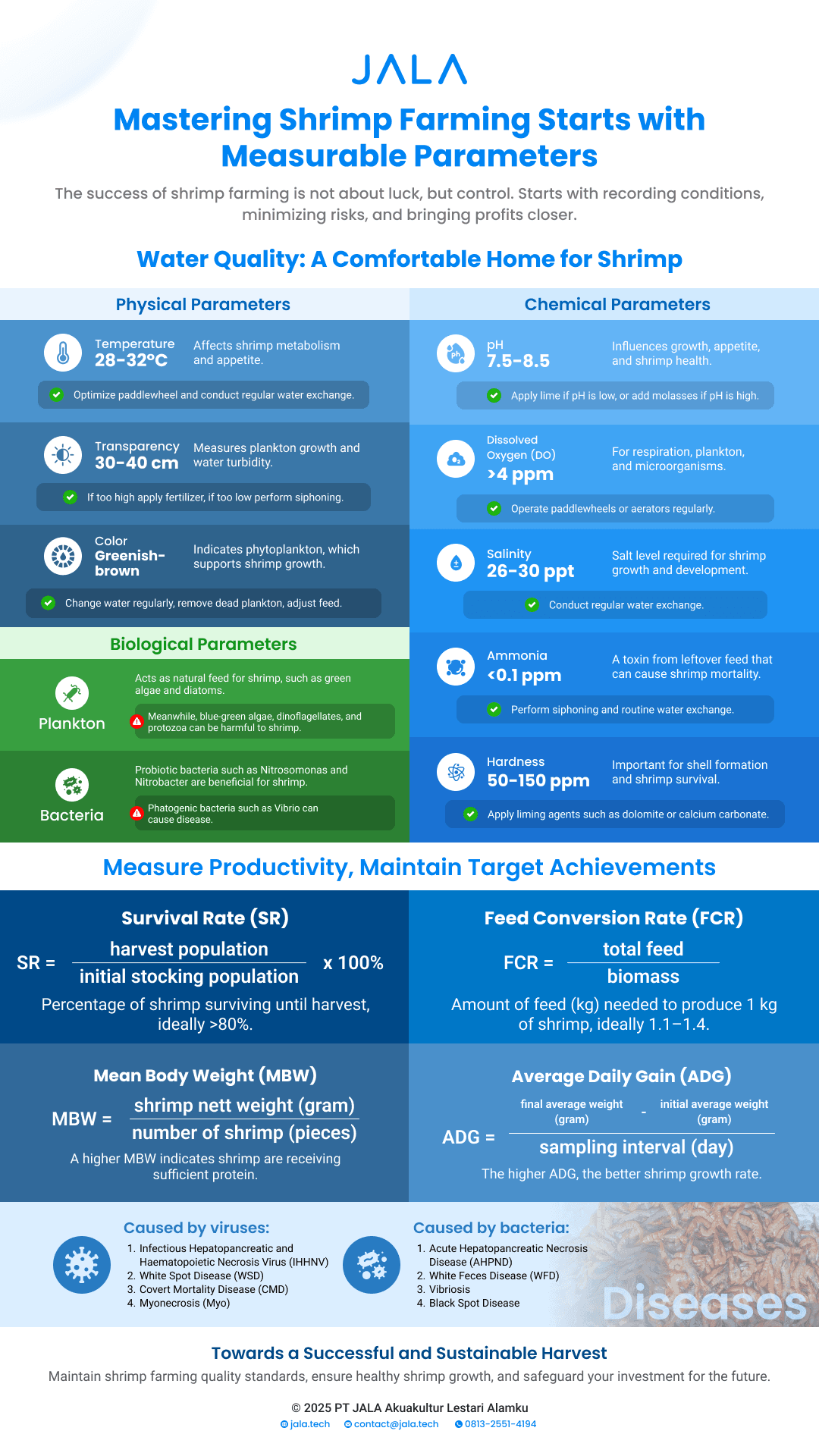
It is necessary for farmers to record the aforementioned parameters regularly and analyze them. From the analysis, they will be able to gain valuable insights to make decisions.
Pond and Parameter Analysis Comparison
Analysis is helpful not only for examining conditions within one pond, but also between ponds and cycles. Farmers can see the performance of one pond with another and from one cycle to the next.
This comparison will help farmers identify ponds that have good and bad performance, assess the cause of differences, and adjust the management for the ponds with bad performance.
Meanwhile, comparing parameter analysis helps farmers to understand the connection between one parameter and another. For example, salinity indirectly affects FCR. A high value of water salinity will increase the energy needed by shrimp for osmoregulation, increasing their metabolism as well. Shrimp will require more energy sources for this, making their growth slow down and FCR higher.
Case Study: Implementation of Pond and Parameter Analysis
An ideal shrimp farming is actually relative to farmers since farmers tend to rely on targets. When a farmer thinks that his/her cultivation is already ideal or good, data analysis helps him/her to see the track record of the cultivation. Read the case scenario below for an example.
Mr. Jali, a shrimp farmer, thinks that the cultivation cycle in one of his ponds progressed satisfactorily. Besides feeding according to the dosage and needs of the shrimp, he also recorded water quality parameters and shrimp growth regularly. Mr. Jali is curious as to why the cultivation had yielded such positive outcomes. He then attempted to examine the parameter charts in the shrimp farming management application he used.
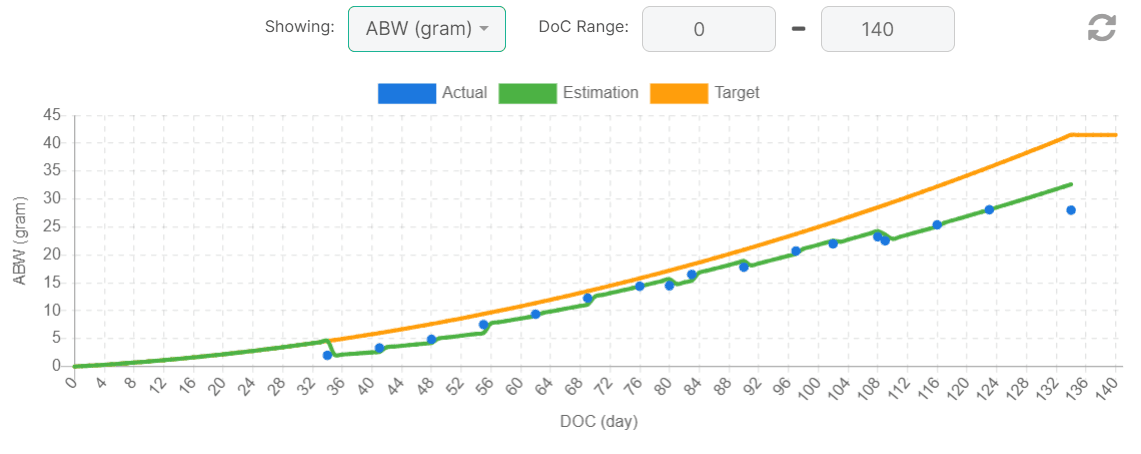 Until the end of the cycle, the actual growth of the shrimp in the pond was somewhat off target, but it was nevertheless good. The fluctuations were not too drastic.
Until the end of the cycle, the actual growth of the shrimp in the pond was somewhat off target, but it was nevertheless good. The fluctuations were not too drastic.
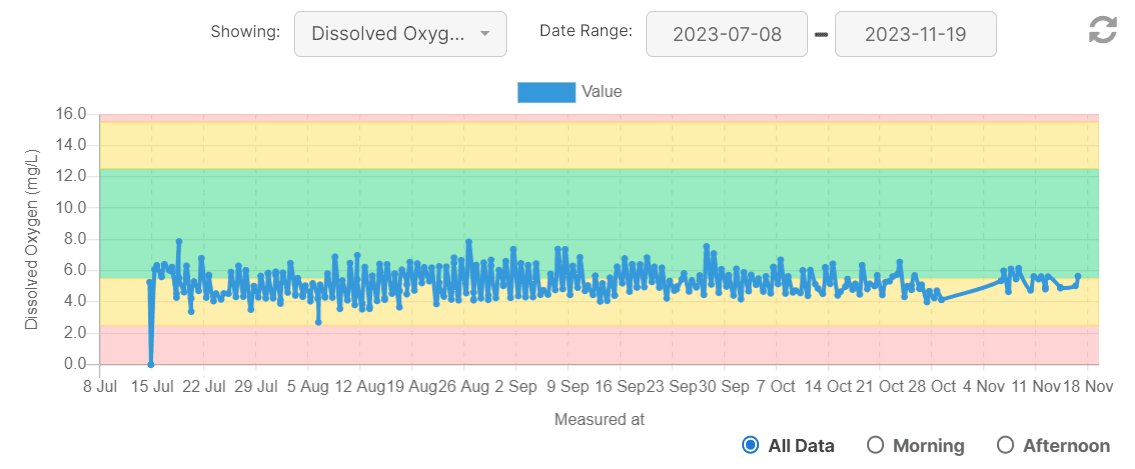 The DO performance was in the yellow area several times, slightly below the ideal value. However, it was found to be safe in several other measurement sessions as the value was higher than 4 ppm.
The DO performance was in the yellow area several times, slightly below the ideal value. However, it was found to be safe in several other measurement sessions as the value was higher than 4 ppm.
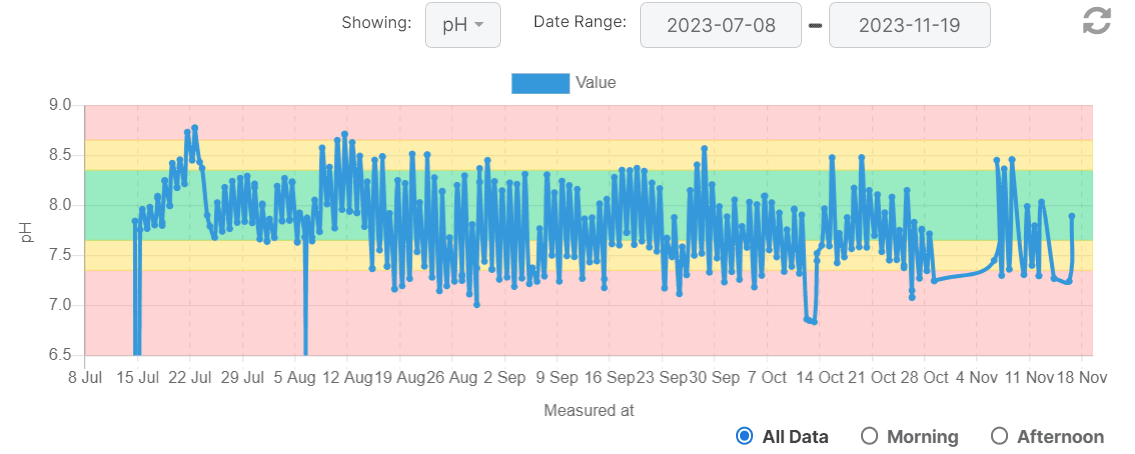 The pH of the pond fluctuated drastically several times, with the difference nearly reaching 1. Nonetheless, the majority of it was recorded to be in the green area, indicating that it was quite optimal.
The pH of the pond fluctuated drastically several times, with the difference nearly reaching 1. Nonetheless, the majority of it was recorded to be in the green area, indicating that it was quite optimal.
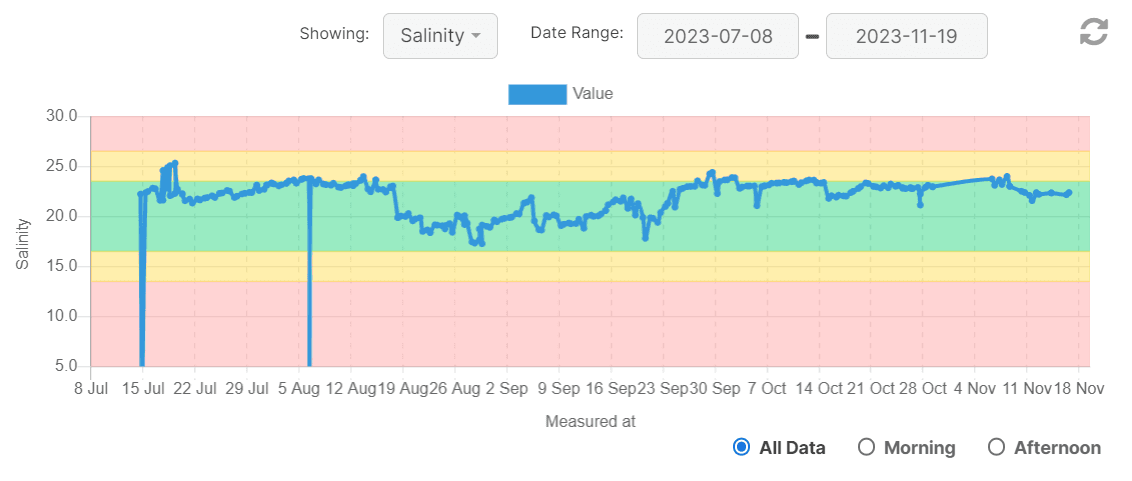 The salinity of Mr. Jali’s pond was also quite good since it was in the green area. Only in the early days of cultivation did the value surpass the ideal limit.
The salinity of Mr. Jali’s pond was also quite good since it was in the green area. Only in the early days of cultivation did the value surpass the ideal limit.
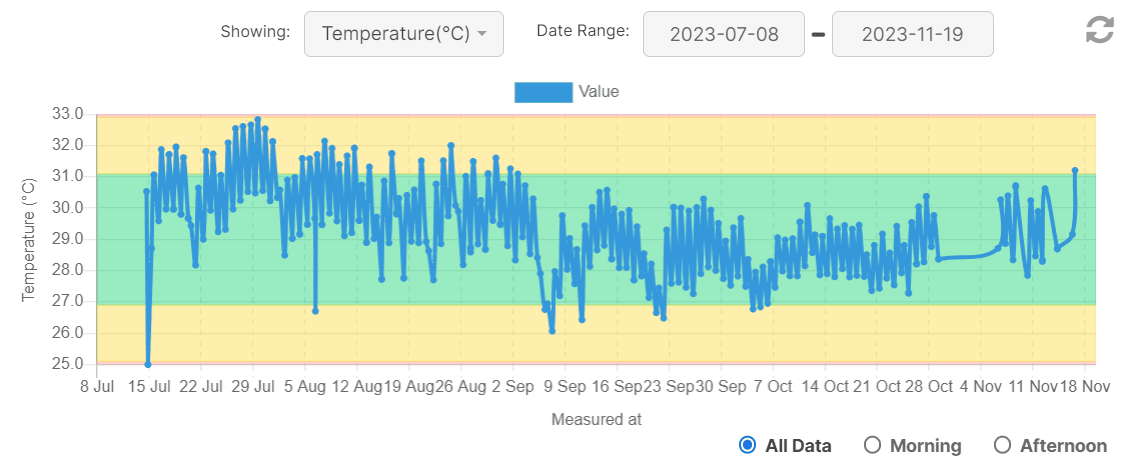 The temperature of the pond water repeatedly touched the yellow area, much like salinity did. Most, though, could still be kept between 27℃ and 31℃.
The temperature of the pond water repeatedly touched the yellow area, much like salinity did. Most, though, could still be kept between 27℃ and 31℃.
The analysis charts demonstrate the physical water quality conditions in Mr. Jali’s pond in a single cycle. In general, these water quality conditions are what make his shrimp growth quite excellent. The water quality parameter values are in the green area or the recommended range for shrimp cultivation on average. Mr. Jali was able to validate what he thinks because of his regular data records and analysis he conducted.
Conclusion
Pond and parameter analysis is crucial in the vannamei shrimp farming process. From the analysis, farmers are able to identify cultivation conditions, take appropriate measures, anticipate issues, and optimize productivity.
If you are a shrimp farmer who wants to analyze your cultivation parameters, JALA App is the right solution for you! This shrimp farm management application is #HeretoHelp you in gaining insights about cultivation conditions. Make sure to record data regularly and completely to get a comprehensive analysis from us.
What are you waiting for? Sign up at app.jala.tech and download the mobile app on Google Play Store or App Store!





